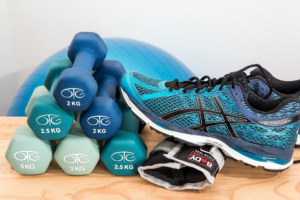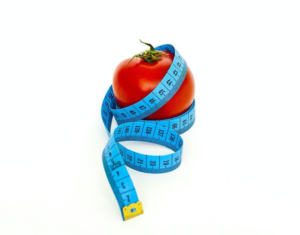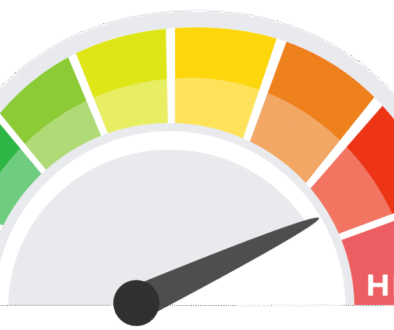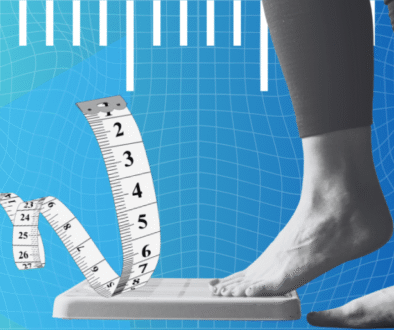How To Lose Weight By Running
By Ajmal Dar

Many turn to cardio when they want to lose weight. While it is a doable solution, it’s not as straightforward as you might think. There is s a wide variety of opinions floating around online on the topic, so I am here to make it easier for you.
My guide on how to lose weight by running helps you determine what you need to reach your goals. Let’s run!
Benefits Of Running
It’s extremely popular worldwide. Nearly 60 million in the United States participated in running in 2017. Whether you’re running in conjunction with other physical activities or going at it as your one form of exercise, it has a lot to offer.
Some of the benefits, aside from helping with weight loss, include:
- Cost-effective: There’s no need to pay for a personal trainer or gym membership. Hit up your neighborhood or local trail.
- Little equipment required: You can grab a good pair of running shoes for less than $100. Other than that, some headphones and a watch, and you’ll be good.
- Confidence booster: Nothing feels quite as nice as getting in a good workout and meeting your goals. You’ll feel great about your achievements.
- Aids mental health: From lowering stress levels to helping ease depression, anxiety, insomnia and more, this exercise goes beyond the physical body.
- Enjoy that high: That’s right. Running gets you high. It’s an exhilarating sensation and is thanks to the “feel-good” endorphins it releases.
So What’s The Best Way To Lose Weight Through Running?
It’s not as easy as hopping on the trail, running your heart out and seeing the pounds drop. The thing is, the exercise itself is one thing, and the support system you have in place is another. What is your diet like? How often are you running? Do you have the strength in place for a successful run or do you need to train that, too?
These are important questions to answer, and here is how to help your goals become a reality:
1. Build Strength
The story about running being “bad” for your joints is common and is one that’s negated by studies. However, we have to put this in context.
Taking care of our knees and ankles is important, especially as we age. Having strong legs is only one part of the equation, though. To avoid wear and tear over time and risk of injury, runners need core strength.
Having a solid core allows the rest of our body to work well together, including our hips and back. It also provides us with balance and stability, which will further keep us safe and on-point.
So, not only will strength training protect your joints, but it will allow you to be a better runner in the long-term. Furthermore, it’ll help with your weight loss goals as well, since more muscle means more calories burned.
Strength Training For Beginners

If you already go to the gym, you are already set to incorporate some drills into your routine. For those that don’t, why not start at home?
The following strength-building exercises are a great starting point and do not require much equipment. I recommend doing them on a non-slippery surface with cross-trainers that have a fair
amount of traction:
- Plank: Everyone knows it or has, at least, heard of it. It’s a simple yet effective core burner. Start by laying on your belly, then prop your weight up on your forearms and toes. Keep yourself straight from your head down to your feet. Elbows should be directly under the shoulders. Don’t let your butt sag.
- Side plank: Take the regular plank up a notch and add a balancing act in there. Lie on your side and lift your body so that your weight is resting on the side of your bottom foot and your forearm under you. You want to maintain a straight, diagonal line from the feet through to the head.
- Bridge: Lie on your back with your arms beside you. Bend your knees 90 degrees and place your feet on the floor, close to your butt. Lift your butt as high as you can while pressing through the hands and feet. Don’t let your hips dip to the ground. For a greater challenge, lift a leg and lower it again, then switch.
- Lateral leg raises: You might feel like Jane Fonda here, and that’s partly why they’re so popular. Plus, it works! Lie on your side and prop yourself up on your forearm—similar to the side plank. But here, you’ll stay with the bottom leg on the ground while lifting the top leg up and down. Aim for a 45-degree lift.
2. Create A Schedule
One of the biggest mistakes people make when looking to pick up a new exercise routine is to jump in without a plan. This sets you up for burn-out and frustration, which isn’t at all necessary.
Creating a schedule to match your goals will help you stay focused and motivated.
Running every other day is a great place to start. This gives you days of rest in between. If you’re feeling up to it, you could perform other activities on those days. Make sure they’re low impact, though, like swimming or light hiking.
How To Run On A Schedule
Knowing which days you’ll run isn’t quite enough, though. Since you are running for weight loss, you will need to set your time and pace, as well. This won’t be the same for everyone, depending on your current level of fitness.
Aside from running every other day, here are some tips for beginners:
- Day one and two: Run 20 to 30 minutes, twice per week. When you’re just starting, this will be more of a run/walk session, and that’s completely okay. Give yourself time to adjust.
- Day three: For the third day, up that to a longer session of around 40 minutes.
- Days four through seven: You can take these as rest days from running, but feel free to build in some core training or mobility work. It is up to you as a beginner, but don’t overdo it.
- Know your pace: Don’t run so fast you can’t hold a conversation. This will lead you to get quite winded and tire easily. Keep it at a pace where, if you are with someone, you can maintain a light dialogue.
Remember, it is always the tortoise that wins the race. The above is a basic guideline for beginners, but the key is to only do what you can manage. Too much too soon and you won’t achieve those weight-loss goals.
3. Watch Your Diet

If you train hard but ignore what you eat, the chances of losing weight are slim.
To lose weight running, you want to create a caloric deficit. In layman’s terms, that means you want to burn more energy than you take in via food. This becomes tricky when you’re uber hungry after a run or want to reach for that brownie because “you deserved it.” Yes, you could still have a brownie from time to time, but it’s necessary to start counting your calories and tracking them, along with your runs.
When you start your journey, it could take some time trying to figure out exactly what your dietary goals are, in conjunction with your exercise. One of the most important things is that you keep things realistic and achievable.
Counting Calories
For the average individual, a general rule of thumb for weight loss is that you want to aim to lose around 1–2 pounds per week, maximum. This means you would need to burn between 500 and 1,000 calories above what you consume each day.
The first step here is to calculate the calories you need and how much weight you want to lose long-term. You’ll then factor in your runs and strength training to help you determine how much you’re burning.
There are plenty of calculators and programs available online to help you with this. The common categories you’ll need to fill in include weight, sex, age and activity level. The more active you are, the more calories you can consume—awesome, huh? But you still need to maintain a caloric deficit.
Enjoy Healthy Snacks

Counting your calories doesn’t mean you’re stuck eating lettuce wraps and rice cakes all day, although I do love those things. Yummers!
To keep yourself from feeling bored or overly hungry, allow yourself to enjoy some healthy snacks.
Again, be patient here because it might take you time to adjust. A few options to consider for fuel before or after your runs include:
- Nuts: They’re full of healthy fats and proteins. You have a wide variety to choose from, as well, from cashews to almonds. Throw them in a granola mix to spice things up a bit.
- Fruits: You’ll learn to love fruit when losing weight because it helps us avoid refined sugars, which are a “no-no.” That doesn’t mean they don’t count where calories matter; they just offer more nutrients. Bananas are a go-to choice among runners, for example.
- Cottage cheese: This popular dieting food is lower in fat than other cheeses. You still get that creamy reward, though. Have it with some wheat crackers or cucumber and carrot sticks. Yum.
- Hummus: This is another protein-rich option that you can use a dip. It’s full of healthy carbs and fiber, among other nutrients. Enjoy it with some pita bread, if you like.
Go Easy With Your Weight Loss Journey
I know it is a lot to take in… not only do you have to make a running schedule, but you have to change your diet and count everything. If you are feeling overwhelmed, don’t worry. It is completely normal at the get-go, but the wonderful news is that it gets better.
Once your routine is constant and your eating habits shift a bit, your weight loss goals won’t seem so far off.
A few tips to keep in mind along the way include:
- Expect setbacks: Everyone has off days, weeks or even months. Life happens, and we get swept away with all our responsibilities and commitments. Don’t beat yourself up if you miss a day of running or garble down a pizza. You’re human, after all. Expect it to happen, get up and start again.
- Build a support network: Going at it alone isn’t cool. Call on your friends to lose weight running, too. Create a little club or join one that already exists. There are even virtual worlds where you can reach out to people that are in your boat. This will be crucial when motivation can’t be found and you need a “pick me up.”
- Engage in other activities: It’s easy to get tunnel vision when you have a weight loss goal in mind. Some become obsessed and lose sight of everything else. Avoid falling into this trap and keep things balanced, instead. Enjoy other activities on your days off, so you are not thinking about it every minute
FAQs
These are some of the common questions I had when I first started running, and I now get asked them, too!
1. How Many Miles Should I Run A Day?
The best way to go about it, in the beginning, is to run every other day. Your goal is more about pace and time than it is the exact distance.
Remember, I recommend starting with 20-30 minute runs, twice per week, and a 40-minute run once per week. However, if you are curious as to how it all translates into miles, let’s look at a few examples here:
Let’s say an average 40-year-old man will run 1 mile in around 10.5 minutes, whereas a woman of the same age would complete a mile in 12.5 minutes.
So, according to my recommendations, you’ll be running around 2–3 miles on your short days and closer to 4 miles on your long day.
2. Is It Safe To Run Everyday?
If you’re an athlete or a long-time runner, running every day might be quite standard for you. However, for beginners looking to lose weight running, I don’t recommend it.
Rest days are important for recovery, and you don’t want to risk burn out. Keep it on the safe side and start with a more manageable routine.
If you end up becoming an avid runner, this might change. But for now, why push yourself over the edge?

Drop And Run
How to lose weight running entails more than just physical activity. Making sure you are strong enough, keeping on track and watching what you eat can all make or break your success.
Hit your goals by maintaining a balanced and positive approach to the process. Enjoy your healthy snacks, days off and keep at it when you encounter a setback. Those hurdles happen to everyone and are nothing to be ashamed of.
Also, don’t hesitate to find some running buddies that make it easier to hit the trails, and best of luck on your weight loss journey.
My name is AJ Dar, and I am founder and editor of Moccasin Guru, an online show review company. In addition to running, I’ve been buying shoes, trainers, flip flops, sandals, sneakers, work shoes, jump rope shoes, cross training shoes, etc for years. Now, I’m not one of these people who owns 100’s or 1000’s of pairs of shoes, but when I do buy a new pair, I like to research them to the nth degree. And that is what Moccasin guru is about. It’s about sharing what I’ve learned with you.
If you want to understand exactly why one shoe is better than another for you than another and you want information, details and honest analysis that lets you make an informed choice; want to feel comfortable enough to enjoy the activities that you’re doing without wondering if you’ve brought the right footwear for the job; and want shoe advice based on customer experience and not commercial sales pages. You will enjoy the content you find on this site. Connect with me at www.moccasinuru.com. I look forward to having you read my guides and reviews.



